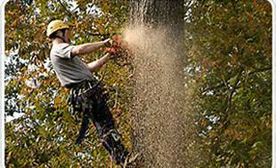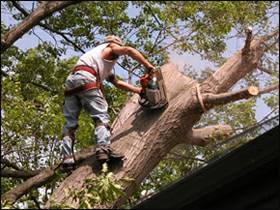Landscaping
FREQUENTLY ASKED QUESTIONS


Learn more about our Landscape Design, Landscape Installation, Irrigation Installation and Repair, Landscape Maintenance, and Snow Removal & Ice Control here. While landscaping services focus on maintenance tasks like lawn care and planting, landscape designers specialize in creating cohesive outdoor design plans with hardscaping elements. Our versatile landscaping service can enhance any area of your yard, including solving drainage and erosion problems.
Why should homeowners work with a landscaping Service or Landscape designer?
A skilled and experienced landscape designer dedicates their life to the subject. They bring knowledge, innovative ideas, and creativity to craft a design that complements your home, lifestyle, and tastes.
Landscape design is a multi-faceted challenge, encompassing art, environment, architecture, engineering, and horticulture. Unlike static art forms, a garden is a dynamic ecosystem that requires ongoing efforts. Creating a garden involves careful consideration of plant species, spatial arrangement, seasonal appeal, and future appearance, including flower beds. A landscape designer considers all these factors while infusing style to capture the garden’s unique spirit.
Working with a landscape designer during the planning phase can save you money and time. It’s more cost-effective to pinch pennies and consider alternatives and make changes on paper than during installation or after completion. Landscape design involves creating documents that serve as blueprints for your project. These documents help you obtain bids from contractors for developing your site in a single project or in phases over time. Additionally, when landscaping your property, it is important to have a master plan in place. This plan should start with the area closest to your house and extend outward. It is also advisable to focus your efforts on your front yard, as it is the most public-facing spot. Each property has different requirements, so taking these factors into consideration will ensure a successful landscaping project. If you tell us you want to lower your environmental impact, we can walk you through the native plants that will thrive in your gardens without needing external help. Or we can give you a plethora of options for rainwater collection.
Our landscaping service specializes in horticulture and will create a master plan for your outdoor space. We select the best materials and plants for your site and budget, solve specific problems like privacy or noise, and work with top professionals in the landscape industry to bring your vision to life.
Working with a landscape designer offers several benefits, including quality control during installation, discounted plant purchases, and ongoing consultation as the garden evolves.
Initial Consultation
The initial landscaping service consultation includes an onsite meeting to discuss your ideas and vision for the property.
We will discuss site possibilities based on your wishes and budget. If we agree on a partnership, our landscaping service will provide a design proposal with the scope of work and estimated fees.
Design Process
We will review your completed client questionnaire, favorite photos/gardens, and budget. We will also determine a color palette for your garden.
We conduct a thorough site analysis and prepare a base map. This includes measuring the site, taking photographs, analyzing soil, researching building codes, observing sun/shade/wind patterns, noting drainage, noise, and privacy issues, and identifying plant material to be retained, removed, or relocated.
After completing the base plan, I will create concept sketches for your review. We can also refer to books or photographs to help determine the design direction.
Develop a preliminary plan and review it with the client. Finalize the location and design of site elements, such as patios, walkways, fences, arbors, play areas, outdoor kitchens, pool features, lawn, and planting beds. Specify building materials for hardscape elements and develop a lighting plan if needed.
We develop a planting plan that includes the specific location, botanical and common names, quantity, and size of each plant selected. We also provide a picture report of all plants for client review.
Prepare the final conceptual plan, which may include a demolition plan, hardscape plan with building materials legend, construction notes/details, lighting plan, planting plan, and proposed irrigation zoning plan.
Why should I hire a licensed & insured landscaping service?
Hiring a licensed, bonded, and insured landscape contractor protects you and your property. An unlicensed contractor brings more risks than savings. You can be held liable for injuries, taxes, insurance, city and county codes, workmanship issues, warranties, and even the contractor’s illegal acts. Check the license status and references of any contractor before hiring them at https://fortress.wa.gov/lni/bbip/.
To ensure the landscaping service company you hire has insurance coverage, ask for a written certificate of insurance. This includes workers’ compensation, general liability, and business auto insurance. Workers’ compensation protects you if a worker is injured on your property. General liability covers damages caused by construction. Business automobile insurance provides additional protection for accidents involving the contractor’s vehicle on your property.
When is the best time of year to do a landscape installation?
Fall and spring are the best times to plant. Plants dug from nurseries in the fall are dormant and less likely to stress from transplanting. This allows their root structure to grow before producing top growth in spring and summer. Watering in winter is still necessary for plant survival.
In the landscape industry, “fall” refers to a planting season related to the dropping of leaves and moisture in the ground, rather than a specific calendar date. Rainy periods make it challenging to dig and transport plants, while dry periods make it difficult to keep soil undisturbed around root balls. We work with these elements to find the best way to install a landscaping plan.
When planting in summer, extra care is needed to ensure plant survival. Dig plants from nurseries early, “heal them in” to protect roots, and closely monitor them throughout the warmer months.
Are there guidelines regarding the watering of newly installed landscape plants?
Watering is crucial for newly planted trees and shrubs, but over-watering can be detrimental. Yellowing foliage is a sign of excess water. It’s important to follow specific guidelines for each plant to ensure proper watering.
Will installation destroy my lawn?
Our goal is to carry out irrigation installations without causing any disruption. Typically, all lawns regenerate within a span of 14 days.
How long does installation take?
The majority of residential projects can be finished within a few days.
Is there a backlog for installations?
The best time to sign up for our services depends on the time of year. Spring is the busiest season, so it’s advisable to sign up early. We offer installations throughout the year. Feel free to inquire about off-season pricing.
How long does the typical system last?
With regular maintenance, our systems can last for at least 30 years. Inquire about our lifetime warranty on installed systems.
What are the components of an automatic irrigation sprinklers system?
A typical sprinkler system consists of a controller, valves, and sprinklers. Additional customization options include rain shut off devices, soil moisture sensors, and drip irrigation zones.
What are the components of an automatic irrigation sprinklers system?
A typical sprinkler system consists of a controller, valves, and sprinklers. Additional customization options include rain shut off devices, soil moisture sensors, and drip irrigation zones.
Do you warranty your repairs?
Our landscaping service provides a 90-day labor repair on most repairs, along with manufacturer warranties on most parts we install. We assess each repair individually and provide an explanation of this guarantee.
What maintenance (trimming and Pruning) is recommended and how much does it cost?
To maintain the system, blow it out with compressed air in the fall and clean and adjust it each spring. The yearly cost is usually less than $200.00.
Turn-On: Each zone is turned on. Every sprinkler is checked for coverage, direction of spray, and any necessary repairs are made.
Turn-Off: A high powered compressor is attached to the system and compressed air is fed through every line to be sure there is little, if any water left in the system over the winter. Ask about our no break guarantee.
Why do I need a lawn maintenance program?
Professional landscaping services can help maintain an attractive landscape and enhance the curb appeal of your home. The easiest way to ensure your landscape is professionally cared for and always looks great is by hiring our landscaping service for all your home services needs. Services include lawn mowing, edging, removing clippings and organic material, pruning bushes and trees, trimming perennials and ground covers, leaf removal, planting bed maintenance, and compliance with local HOA requirements. A sound maintenance program involving fertilization, watering, mowing, and cultivation, backed by years of experience and a commitment to professionalism, is essential for a beautiful lawn. Trust our experienced team to keep your lawn lush and green year-round, so you can enjoy more time with family and friends without having to worry about hours of labor-intensive yard work, especially after a long workweek.
What does landscape maintenance cost?
For a cost estimate of maintenance service for your property, contact Jeffrey Williams Landscaping. We will survey your site, evaluate its needs, and provide a customized proposal based on lawn size, planting beds, and pruning requirements.
Do you provide weekly service through the winter months?
In winter, there are various projects to do like pruning shrubs and trees, cutting back perennials, lawn care, applying winter fertilizer, and moss control. It’s also a good time for detail raking out bark or mulch, removing leaves, and keeping your yard clean.
Do I need to aerate? When?
If you’ve never aerated your turf, it probably needs it. Aeration involves punching holes through thatch, turf, and compacted clay soil. These plugs are then left on top of the turf to decompose, allowing air, nutrients, and water to reach the roots. It’s best to do this annually in spring or fall.
The benefits include:
- Reduces soil compaction
- Improves grass rooting
- Promotes thatch breakdown
- Improves drought tolerance
- Enhanced fertilizer uptake
- Lime and fertilizer penetrate the soil much faster
What are the benefits of Over-seeding?
For large bare and damaged areas we recommend over-seeding, this will fill in thin areas in your. After aeration is a great time to over-seed your lawn.
- Helps to thicken lawn and fill in thin weak areas
- Incorporates seed varieties that grow well in both sun and shade
- Introduces healthy young grass that can better resist heat and drought stress
I have brown (or yellow or dead) spots in my turf. Why?
Spots that are 12 inches or smaller may be pet urine. If you applied herbicide, it could be the cause. Some critters and fungi can also damage your grass. For pathogen identification assistance, visit websites. Good cultural practices ensure healthy turf in any situation.
What is the benefit to mowing my grass weekly, opposed to every other week?
To maintain healthy grass, mow frequently during the active growth period. Avoid cutting more than one-third of the grass blade each time. For cool season grasses, spring is the peak growth season, requiring weekly mowing at a minimum. Waiting two weeks to mow can stress the lawn and promote diseases.
What do I do with the grass clippings?
Regular mowing and leaving clippings on the lawn can provide nutrients to the grass plant. Check the thatch thickness before leaving clippings. If it’s over 1 inch, bag the clippings or de-thatch your lawn.
What steps need to be taken to prepare my lawn for winter?
- Several final steps will help your lawn in late fall (October into November in Washington).
- Ensure your grass is cut short enough (but not scalped) to prevent it from “laying over” under any snow cover.
- A 2 to 2-1/2 inch cutting height should be sufficient. It’s actually best to gradually lower your cutting height over the final three cuts of the year, instead of trying to do it all in one final cut.
- Check for any last minute leaf accumulations that may smother your grass.
- If your lawn soil test calls for lime, late fall is considered the best time of year to make a lime application. Retest your lawn soil every three to five years for deficiencies.
- Late fall is the time to apply fall/winter fertilizers — these are usually high in potassium, which helps winter hardiness and disease prevention. Even though top growth of your lawn has ceased, the roots remain active to “pick up” the nutrients. If you’re applying both lime and fertilizer, it’s best to separate the applications by two weeks.
Why prune in winter?
- In winter, shrubs and trees go dormant and store their nutrients in the roots. This promotes growth and prevents loss. Knowing your plants is crucial to avoid cutting off flower or fruit buds.
Is applying a heavy application of granular ice melting product the most effective ice melt strategy?
- Excessive ice melt product applications can result in tracking and potential landscape damage. The most effective ice melt strategy is to pre treat the area at the recommended rate on the bag. This will prevent the ice from bonding on the surface.
Will the ice melter you use harm my family, property or landscape?
We use the most powerful, non-corrosive and environmentally-friendly ice melter on the market to protect people, pets and property.
- Effective to -5°F (-21°C)
- Less damaging to concrete and metal
- Contains vegetation enhancers and protectors
- Safe, nontoxic to humans, animals and vegetation
Why do you feel it is necessary to start your route so early in the am or in the middle of the night?
To prioritize safety and efficiency, we conduct snow removal operations during the night.
I was told my lawn is getting a thick thatch layer that will soon become a problem, so what can I do?
In the first few years, new lawns usually don’t have thatch build-up issues. However, if you use a strong fertilization program with 4 or more nitrogen applications per year, you’ll soon develop a thick thatch layer. When thatch exceeds 1/2-inch thickness, various problems will become more common.
Core aeration is the best preventative medicine for your lawn. It is recommended twice a year (spring and fall) for lawns with 1/2-inch or more thatch. Leave the soil cores on the surface to breakdown naturally. If your soil pH allows, apply a light application of lime after aeration. Also, over-seed bare spots with a similar seed mix for optimal growth.
What is Jeffrey Williams Landscaping policy on end of the year property repairs?
Jeffrey Williams Landscaping Service will repair property damage caused by our gross negligence. We are not responsible for chain marks, scratches, or gouges from normal snow removal operations or driveway damage due to poor construction or compaction. We are also not responsible for damage to property that is not clearly visible and marked by the homeowner.
What are some common mistakes to avoid when hiring a landscaping service?
Avoid common mistakes when hiring a landscaping service. Research and background checks are crucial. Clearly communicate your expectations and requirements. Get multiple quotes for comparison. Ask for references and check online reviews.
Our
Accolades






